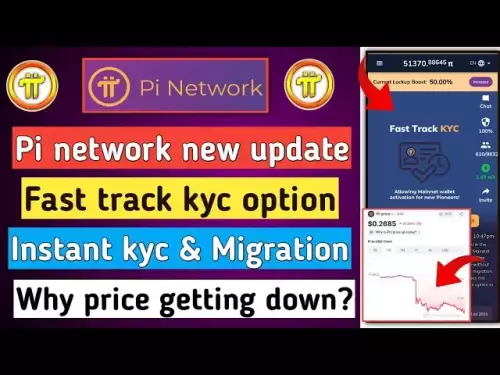 |
|
 |
|
 |
|
 |
|
 |
|
 |
|
 |
|
 |
|
 |
|
 |
|
 |
|
 |
|
 |
|
 |
|
 |
|
Cryptocurrency News Articles
How PEPE Coin (PEPE) Spiked Ethereum (ETH) Gas Fees
Feb 01, 2025 at 07:00 pm
Ethereum’s gas fees fluctuate based on network activity, and PepeCoin (PEPE) has played a major role in causing gas fee spikes due to its rapid rise

Ethereum gas fees are dynamic and can be influenced by various factors, including the popularity of specific tokens. One token that has played a significant role in causing gas fee spikes is PepeCoin (PEPE). Being an ERC-20 token, PEPE transactions rely on Ethereum's blockchain, and increased trading volume directly impacts the network's congestion and transaction costs.
In this deep dive, we'll explore how PEPE affects Ethereum's gas fees, its impact on network congestion, and what this means for Ethereum users, developers, and the broader ecosystem.
1. Understanding Ethereum Gas Fees
Before delving into PEPE's impact, it's crucial to understand how Ethereum gas fees are calculated.
What Are Gas Fees?
Gas fees are the costs users pay to process transactions on Ethereum. Fees are measured in gwei (a fraction of ETH) and vary based on:
- Computational effort required for the transaction
- Network congestion at the time of the transaction
When Do Gas Fees Spike?
Gas fees tend to rise when there is sudden demand, such as:
- Bull runs (characterized by high trading activity)
- NFT minting events
- Meme coin hype cycles (like the recent surge in PEPE transactions)
2. How PEPE Trading Caused Gas Fee Spikes
The PEPE Hype Effect
PEPE's meteoric rise in early 2023 led to an explosion in trading volume on Ethereum-based decentralized exchanges (DEXs) like Uniswap. Traders rushed to buy PEPE, leading to:
- Thousands of transactions per second involving PEPE
- Increased competition for block space, pushing up gas prices
- Network congestion, delaying normal transactions
At its peak, PEPE-related transactions accounted for over 30% of Ethereum's total network activity, causing gas fees to skyrocket.
Examples of PEPE's Gas Fee Impact
- April 2023: PEPE Mania Begins
- May 2023: Gas War Intensifies
Consequences for Other Ethereum Users
3. Why PEPE Causes Higher Gas Fees Than Other Tokens
Several factors contribute to PEPE's gas fee impact being stronger than typical ERC-20 tokens.
A. High Transaction Volume on DEXs
Unlike stablecoins or blue-chip assets (e.g., ETH, BTC), PEPE experiences extreme volatility, leading to frequent buying and selling.
- More transactions = more gas demand = higher fees.
B. PEPE's Small Market Cap Leads to Hype-Driven FOMO
Being a meme coin, PEPE started with a low market cap, attracting early investors who feared missing out.
- High demand in a short period overwhelms Ethereum's network.
C. PEPE's Retail Appeal Brings More Users to Ethereum
Many PEPE traders were first-time Ethereum users who had never interacted with Uniswap or MetaMask before.
- More newcomers meant more inefficient transactions, further congesting the network.
4. PEPE's Role in Driving Ethereum Layer-2 Adoption
Due to Ethereum's high gas fees, Layer-2 solutions like Arbitrum, Optimism, and zkSync became attractive alternatives.
- Traders moved PEPE to Layer-2s to save on gas fees.
- Arbitrum & Optimism saw increased adoption, proving Ethereum's scalability solutions work.
- Developers focused on bridging meme coins to Layer-2s, boosting the entire ecosystem.
Example: Uniswap on Arbitrum saw record trading volume as users tried to avoid Ethereum's high gas fees during the PEPE craze.
5. Is PEPE Good or Bad for Ethereum's Gas Fees?
Positive Impacts
- Increased Ethereum revenue (higher gas fees = more ETH burned, reducing supply)
- More demand for ETH staking as validators earn higher rewards
- Growth of Layer-2 solutions, driving Ethereum's long-term scalability
- New user adoption, bringing meme coin traders into the ETH ecosystem
Negative Impacts
- High fees price out small traders and NFT/DeFi users
- Network congestion slows down Ethereum transactions
- Short-term volatility makes ETH less predictable
6. The Future: Will PEPE Continue Impacting Ethereum's Gas Fees?
PEPE's influence on gas fees will depend on:
- Continued popularity of the token and meme coin trends
- Ethereum network activity and gas fee fluctuations
- Adoption and utilization of Layer-2 solutions
Final Thought: PEPE may be temporary, but Ethereum's ability to handle meme coin-driven congestion will define its long-term success.
Disclaimer:info@kdj.com
The information provided is not trading advice. kdj.com does not assume any responsibility for any investments made based on the information provided in this article. Cryptocurrencies are highly volatile and it is highly recommended that you invest with caution after thorough research!
If you believe that the content used on this website infringes your copyright, please contact us immediately (info@kdj.com) and we will delete it promptly.






























































